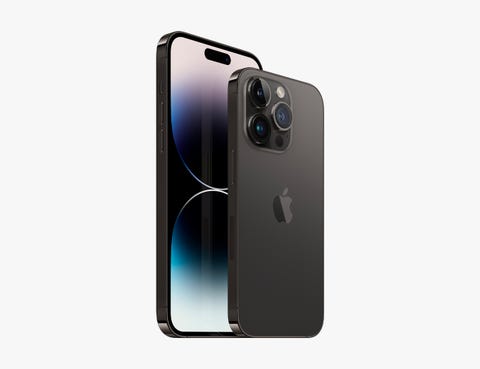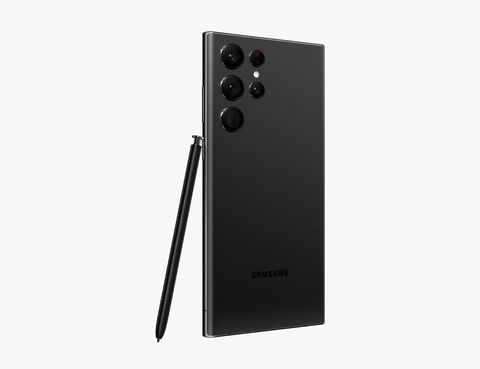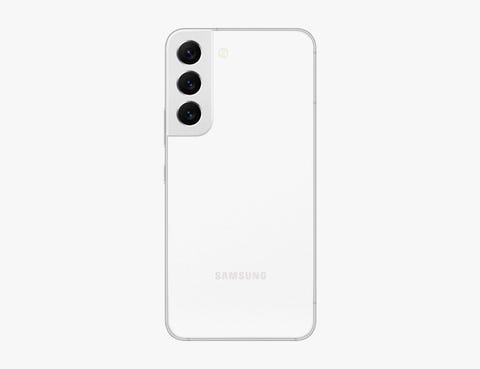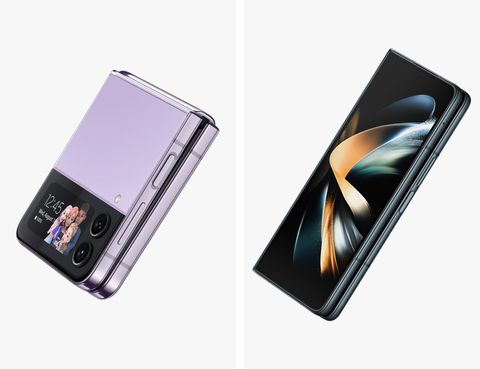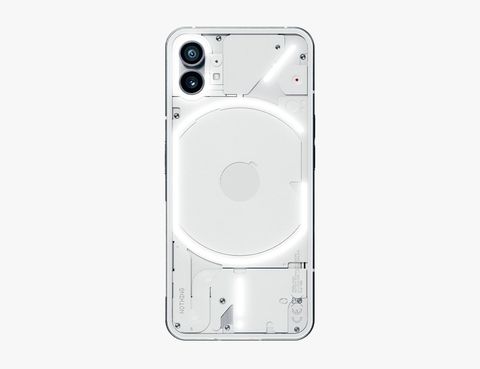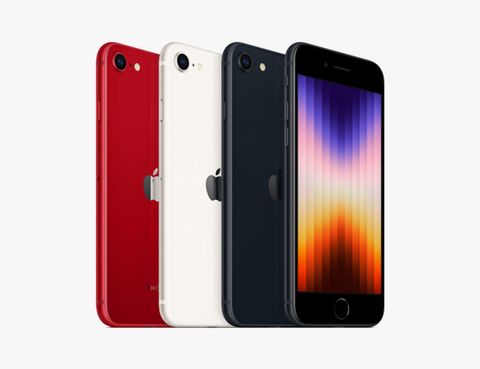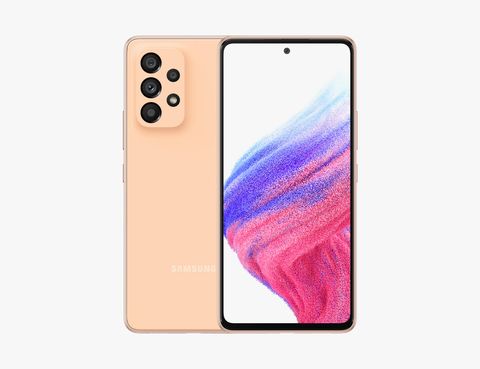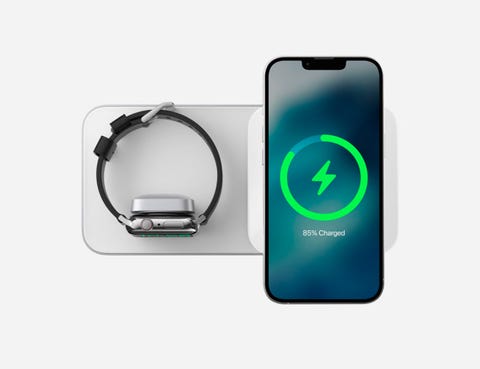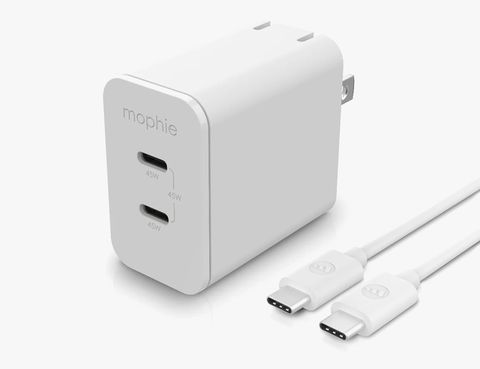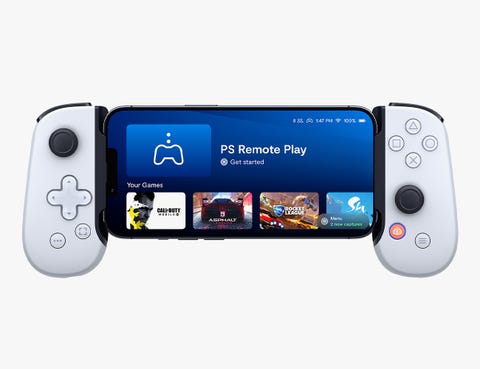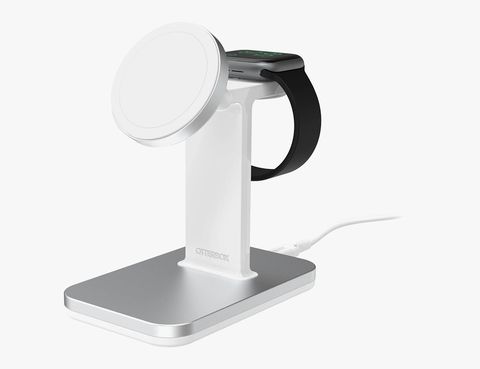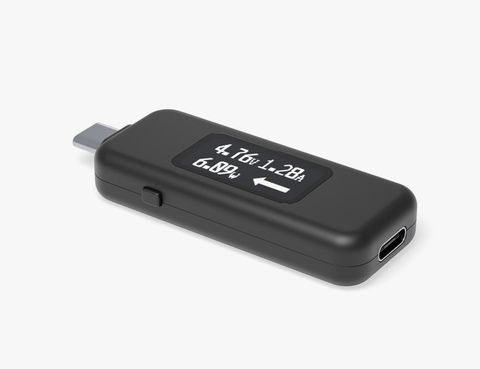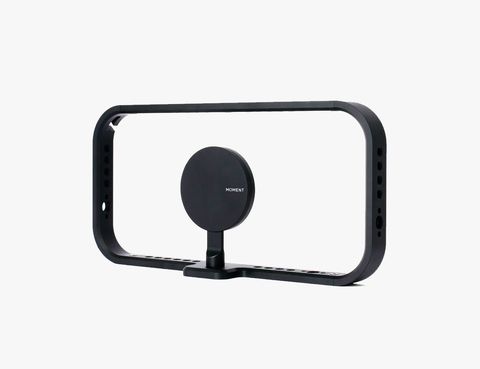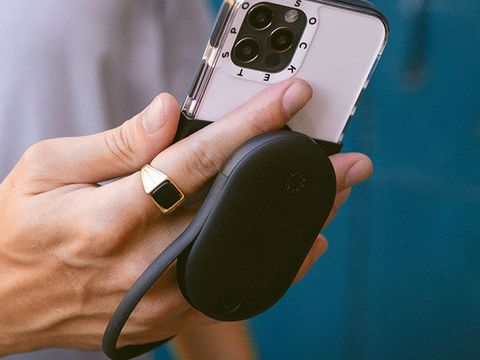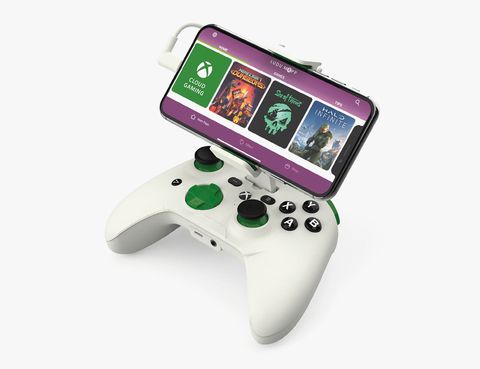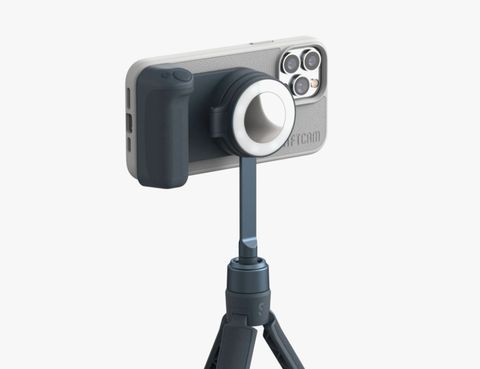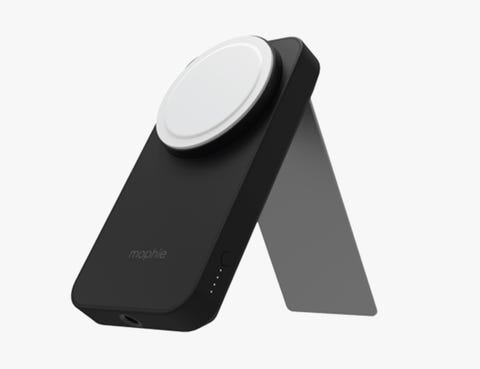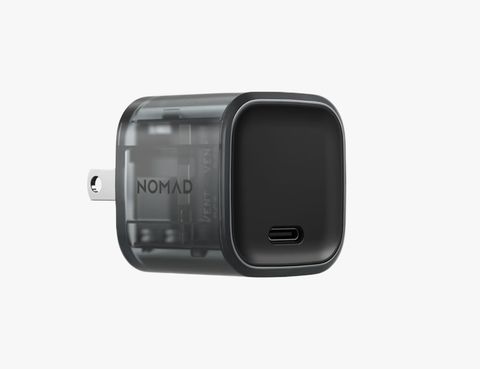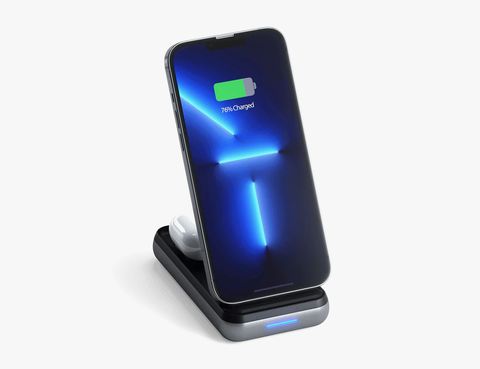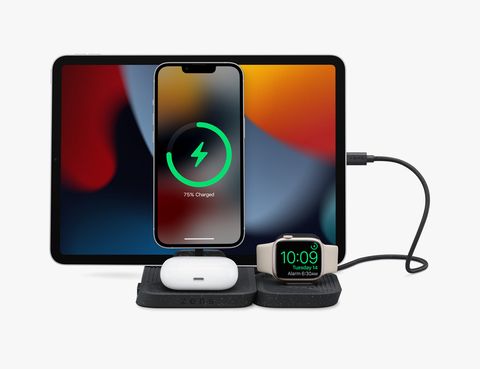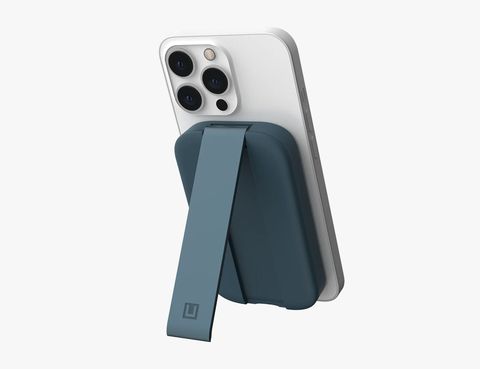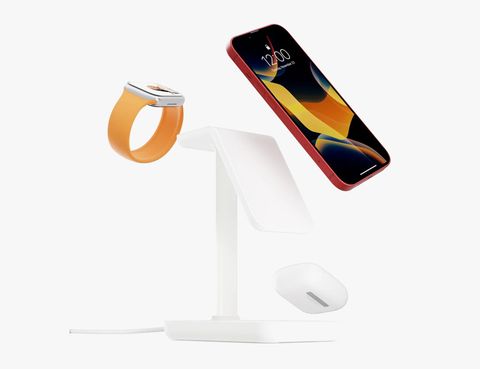Tech
The Best New Smartphones & Phone Accessories of 2022

|
|
This story is part of our end-of-year series This Year in Gear rounding up the most notable releases of 2022. For more stories like this, click here.
2022 is about to be in the books. Looking back, there were a bunch of smartphones (both iPhone and Android) announced — as well as a ton of chargers, cables and other mobile accessories. These are the best that 2022 had to offer.
iPhone 14 and 14 Plus
The iPhone 14 is very similar to last year’s iPhone 13. It’s the same size and has a nearly identical 6.1-inch display. It also has the same A15 Bionic chipset. However, Apple did give it a few notable upgrades under the hood. It has improved rear and selfie camera systems for better low-light photography; there’s a new Action Mode for improved image stabilization when shooting video. It has satellite connectivity — which is a first for any iPhone. And maybe most notably, Apple has done away with the “mini” version and instead replaced it with a “plus” version, which has a 6.7-inch display similar to the Pro Max. (Read our review of the iPhone 14 here.)
Price: $799+
iPhone 14 Pro and iPhone 14 Pro Max
The iPhone 14 Pros were probably the biggest standouts from Apple’s big fall event. They have an all-new floating pill-shaped notch, called the Dynamic Island, that’s interactive and designed to more-easily control apps (like Music, Timer or Maps) when they are running in the background. They have a vastly improved rear triple-camera system, including a 48-megapixel main camera with the largest sensor ever put in an iPhone. And they are powered by Apple’s super new powerful chipset, the A16 Bionic. (Read our review of the iPhone 14 Pro here.)
Price: $999+ (Pro); $1,099+ (Pro Max)
Samsung Galaxy S22 Ultra
The Samsung Galaxy S22 Ultra is the company’s new “best of the best” flagship smartphone. It has the most top-of-the-line features of any new Samsung smartphone, plus it adds the power and productivity features that were previously reserved for Samsung’s Note line. It comes integrated with a new low-latency S Pen. (This also likely means Samsung is fully abandoning its Note line.) Compared to all of Samsung’s new smartphones, the Galaxy S22 Ultra is decked out the largest AMOLED display (6.8 inches), the biggest battery (5,000mAh), the best and most capable camera system (now with 108-megapixel wide lens, capable of shooting 8K video, 100x zoom and a bunch AI-driven features) and the best built-in speakers, with support for Dolby Atmos.
Price: $1,200+
Samsung Galaxy S22/S22+
The Samsung Galaxy S22 and S22+ are very similar to the Galaxy S22 Ultra in a lot of ways. They have the same 4nm processor, the same AMOLED display (albeit smaller) and most of the same camera capabilities. The main differences are that the Galaxy S22 and S22+ are smaller, have smaller batteries and they don’t come with a built-in S Pen. They have mostly the same camera systems, too, except they lack the Ultra’s 108MP wide-angle lens (theirs is 50MP instead) and they don’t have the same advanced autofocusing capabilities.
As far as the differences between the Galaxy S22 and S22+, it primarily comes down to size, battery life and charging speeds (and price, of course). The Galaxy S22 has a 6.1″ display and a 3,700mAh battery, while the Galaxy S22+ has a 6.6″ display and a 4,500mAh battery. When wired, the S22+ supports 45-watt fast-charging, just like the Ultra, while the S22 only gets up to 25 watts. Both wirelessly charge at a max of 15 watts.
Price: $800+
Google Pixel 7 and Pixel 7 Pro
Google released its latest flagship smartphones, the Pixel 7 and Pixel 7 Pro. As you’d expect, they Google’s best-ever smartphones with the most advanced camera capabilities of any Pixel smartphone to date. Both are powered the latest Tensor G2 chip, and they are actually more similar than they are different. The main differences are that the Pixel 7 Pro has a bigger display, more advanced camera (specifically for zoom) and a longer lasting battery. Both are pretty affordable for flagship smartphones, too.
Price: $599+ (Pixel 7); $899+ (Pixel 7 Pro)
Google Pixel 6a
Google released its latest midrange smartphone, the Pixel 6a, which is designed to compete against Apple’s iPhone SE (2022) and the Samsung Galaxy A53 5G — all these smartphones cost $449. The Pixel 6a adopts the new design of the Pixel 5 and Pixel 6 Pro, meaning it has a horizontal camera bar, two-tone color scheme and in-screen fingerprint reader. It also will include Google’s fancy Tensor chipset. The big difference is that Pixel 6a has a smaller 6.1 display with a slower 60Hz refresh rate. Also, its camera system isn’t quite as fancy as Google’s flagship smartphones.
Price: $449
Samsung Galaxy Z Flip 4 and Z Fold 4
Samsung released the newest versions of its foldable smartphones. Both the new “Flip” and “Fold” look very similar to their third-generation predecessors, but Samsung has made them lighter, stronger and more eco-friendly. Both foldable smartphones also have improved cameras, displays and charging capabilities, too.
Price: $1,000+ (Z Flip 4); $1,800+ (Z Fold 4)
Nothing Phone 1
The Phone 1 is Nothing’s first-ever smartphone. The Android’s most standout feature is the innovative lighting notification system located on its back. A different light pattern (and sound) will play depending on the person calling you or the app sending you the notification. The idea is that you’ll be able to tell who is trying to reach you even if your smartphone is lying face down.
Price: Not available in US
iPhone SE (3rd Generation)
Apple released a new-and-improved version of its affordable iPhone SE. The 2022 model has the same design as its 2020 predecessor — that means you still get the Home button, but no FaceID — but Apple has given it an upgraded A15 Bionic processor (the same processor as the iPhone 13 and iPhone 13 Pro), which improves its battery life and gives it a few enhanced camera features. It also supports 5G. The only downside is that Apple bumped the starting price up by $30; the 2020 iPhone SE started at $399.
Price: $429+
Samsung Galaxy A53 5G
Samsung added a new mid-range smartphone to its A-series that’s designed to rival Apple’s newest iPhone SE. The just-announced Galaxy A53 is $30 cheaper (starting at $449), but comes with some more advanced features, including a bigger and faster display (6.5″ OLED panel with a 120Hz refresh rate) and a dual rear-camera system consisting of 64MP main (wide) and 12MP ultra-wide cameras. The main downside is that it doesn’t support wireless charging.
Price: $449+
Fujifilm Instax Mini Link 2
Fujifilm’s newest portable printer, the Instax Mini Link 2 ($100), connects to your smartphone and allows you to print any photo from your photo library; it essentially allows you to use your smartphone just like one of the company’s separate instant film cameras. The Instax Mini Link 2 is a new-and-improved version of Fujifilm’s 2019-released Instax Mini Link, with the major upgrade being that it has a new “rich” printing mode that adds extra color saturation and highlights to the print to make it really”pop.”
Price: $100
Nomad Base One Max
This is Nomad’s second official wireless charger that supports MagSafe, but its first that also comes with charging puck for an Apple Watch. The 2-in-1 wireless charger is beautiful thanks to its glass and metal body. And, weighing almost two pounds, it’s solid enough to not lift every time you pull your iPhone off it. You’ll need to use a 30-watt wall adapter (which Nomad sells separately) for it charge at its fastest speeds. Available in either silver or glass.
Price: $150
Mophie Speedport 45 with USB-C cable
The Speedport 45 is Mophie’s new 45-watt wall adapter with dual USB-C ports. It’s essentially a more powerful and more capable version of the 35-watt dual wall adapter that Apple includes with its M2 MacBook Air. The kicker is that it’s cheaper ($50 vs Apple’s $59) and comes with 2-meter charging cable. You can buy it directly from Apple.
Price: $50
Anker GaNPrime Chargers
Anker released its first power adapters that combine Gallium Nitride (GaN), a material that’s significantly more energy-efficient and space-efficient than silicon, and PowerIQ (Gen 4.0) technology, which enables it to allocate different wattages to different devices based on how much charge they can accept and their current battery levels. Basically, they’re smaller, smarter and more powerful than most other chargers out there.
Price: $60 – $110
Backbone One (PlayStation Edition)
The Backbone One is one of the best handheld controllers for mobile gamers on iPhone. This year, the company announced it has teamed up with PlayStation to create a special version of its well-loved controller — and it looks just like the PS5’s DualSense controller. It’s the ideal solution for those who play PlayStation games (via the PS Remote Play app) on their iPhone.
Price: $100
OtterBox 2-in-1 Charging Stand with MagSafe
The company best known for its rugged smartphone cases has released a 2-in-1 charging station for your iPhone and Apple Watch. It fully supports MagSafe, meaning it can charge an iPhone 12 or iPhone 13 at its fastest possible speeds. And the stand is weighted (0.81 pounds) so it won’t jump off your desk when you go to grab your device. It comes a 36-watt wall charger and the necessary USB-C to USB-C charging cable. You can buy it directly from Apple’s website.
Price: $130
Plugable USB-C Vameter 3
The Vameter 3 is a neat little gadget. It’s a power meter that acts as the liaison between a device that takes a USB-C charge (like a laptop or smartphone) and a USB-C charging cable. Once attached, it’ll then show you how much power — in volts, amps and watts — is being transferred to your device. Plugable has made these power meters before, but this is its first one that reach up to 240 watts (although no current laptops or smartphones can even accept that much power).
Price: $30
Belkin Boost Up Charge Pro
The Belkin Boost Up Charge Pro is the first MagSafe car mount that is capable of charging your iPhone 12 or later at its full 15-watt capacity. This fast charging capability is going to cost you, however. At $100, the Belkin Boost Up Charge Pro costs almost twice as much as other car mounts for iPhone. You can buy it directly from Apple.
Price: $100
Moment Mobile Filmmaker Cage
Moment’s newest MagSafe accessory is designed to help filmmakers who are shooting with their iPhone 12, iPhone 13 or iPhone 14. It’s a two-handed cage that grips your iPhone securely, while also working with attachments, such as a mounting mic and/or an LED light.
Price: $99
Audioengine DAC3
The Audioengine DAC3 is a tiny portable USB-C DAC/amp that’s designed to squeeze that extra quality out of your smartphone or laptop. It packs a ES9281A PRO DAC and supports high-end lossless audio (up to 32-bit/384kHz including MQA files); it looks to be a perfect and relatively budget-friendly option for people who like to listen to Tidal (or another lossless streaming service) and who have a pair of high-end wired headphones.
Price: $149
PopSockets Jumpstart
The JumpStart is a portable battery pack that doubles as a PopSocket grip for your smartphone. The only catch is that it requires you to have the company’s PopGrip ($10), which is sold separately, to work. Once attached, the 2,200mAh battery plugs into your smartphone via a hidden charging cable — both Lightning and USB-C models are available — and, according to the company, can provide up to 50% of extra juice.
Price: $35
RiotPWR Mobile Controller for iOS (Xbox Edition)
RiotPWR and Xbox teamed up to create an Xbox edition controller designed to allow you to play Xbox games (via Xbox Cloud Gaming) on your iPhone. The controller is identical to the latest Xbox controllers, but with a mount and Lightning connector to hold and charge your iPhone while you play. It’s available for preorder now, with an official release slated for August 1.
Price: $63
ShiftCam SnapGrip
The ShiftCam SnapGrip is a MagSafe-compatible accessory that adds a grip and a shutter button to your iPhone 12, iPhone 13 or iPhone 14 — basically, it allows you to use your iPhone as a full-sized camera. It has a built-in battery so it can charge your iPhone, too. And, when attached, it instantly opens up your iPhone’s camera app for quick shooting.
Price: $119+
OtterBox Power Bank for MagSafe
Otterbox released two new portable battery packs — a 3,000 mAh and a 5,000 mAh model — that are designed to work with the iPhone 12 and iPhone 13’s MagSafe system. They are essentially more affordable versions of to Apple’s own portable MagSafe Battery Pack. A neat advantage, however, is that there are magnets on either side of the battery pack which allows you to wirelessly charge your iPhone and the battery pack (if attached to wireless charger) at the same time.
Price: $50 — $70
Mophie Powerstation Wireless Stand with MagSafe
Mophie’s newest portable power bank doubles as a stand for your iPhone. It’s fully compatible with MagSafe, meaning it can fast charge any iPhone 12, iPhone 13 or iPhone 13 at up to 15 watts. It has a 10,000-mAh capacity, which is enough to nearly double the battery life of your iPhone. Additionally, it has a USB-C PD input/output port that you can use to charge a second device along with your iPhone.
Price: $130
Nomad 30W Power Adapter (Transparent)
Nomad released a transparent version of its 30-watt USB-C GaN wall adapter. It’s exactly the same as the company’s 30-watt USB-C GaN wall adapter, but instead of a matte black (called carbide) finish you can see its inner circuitry. It still supports Power Delivery and is powerful enough to charge an iPad or even a MacBook Air. The other good news is that it still costs $30, so there’s not even a price hike to get this neat design.
Price: $30
iFi Go Link
The iFi Go Link is the company’s newest portable DAC/amplifier that you can use to connect your wired headphones to your smartphone, tablet or computer. It connects via USB-C, but don’t worry iPhone users as iFi includes a Lightning adapter (as well as a USB-C to USB-A adapter) right in the box. The Go Link has a built-in 32-bit ES9219 Sabre DAC and supports high-resolution audio files up to 32-bit/384kHz. It’s also pretty darn affordable.
Price: $59
Satechi Duo Wireless Charger Power Stand
Satechi released a hybrid device that’s both a portable battery pack and a wireless charger. It has a 10,000mAh battery capacity, which is enough to charge most smartphones several times over. It has a neat foldable design that transforms into a magnetic wireless charging stand, but when doing so it also reveals a second Qi-wireless charging spot for AirPods. You can wirelessly charge two devices at the same time, but there’s an additional USB-C port that allows you to charge a third device via a wired connection.
Price: $100
Zens 4-in-1 and 3-in-1 Modular Charging Stations
Zens released two wireless charging stands that are fully compatible with MagSafe, meaning they’re both capable of charging any supported iPhone (12 or later) at the max 15-watts. The two charging stations are identical, but the 4-in-1 (shown) model has a magnetically-attaching station that adds an Apple Watch charging puck. You can buy both these models directly from Apple.
Price: $150 (3-in-1); $180 (4-in-1)
UAG Lucent Power Battery with Kickstand
The Lucent Power Battery with Kickstand is a MagSafe-compatible portable battery pack for any supported iPhone (12 or later). It has a 4,000mAh capacity, which is enough to give regular-sized iPhones about 70 percent more juice. As given away by its name, it has an integrated aluminum kickstand that supports both horizontal and portrait viewing angles.
Price: $60
DJI Osmo Mobile 6
The DJI Osmo Mobile 6 is its latest handheld gimbal designed to help you take more stabilized photos and videos with your smartphone. This sixth-generation model has a couple marked improvements over its predecessors. It has a new wheel control on the side of the handle that can help you quickly zoom-in (or out) and focus on your subject. There’s a new “quick launch” feature that, as the name gives away, will help you quickly launch to the DJI camera app so that you can get shooting faster than before. And there’s a new status panel screen that’ll more easily show you how much battery the gimbal has left.
Price: $159
Twelve South HiRise3
The HiRise3 is the company’s newest 3-in-1 charger for iPhone, Apple Watch and AirPods (any model with a wireless charging case). It has a more compact and minimal design compared to other like-minded chargers. Additionally, it also fully supports MagSafe, meaning it can fast-charge any iPhone 12/13/14. The only main downside is that the necessary 20-watt USB-C power adapter isn’t included and will need to be purchased separately. It’s available now in either black or white finishes.
Price: $100





Tech
Nothing Ear And Nothing Ear (a) Earbuds Are 1st With ChatGPT Integration – Forbes


London-based Nothing Tech has just launched new earbuds, two pairs, in fact. The Nothing Ear and more affordable Nothing Ear (a) have just gone on sale—you can read Forbes contributor Mark Sparrow’s review of both pairs here. And now, the company has announced a cool new feature: and industry-first integration with ChatGPT. It comes with strings, though.
The new earbuds have just been announced and are available to pre-order from nothing.tech now and go on sale from Monday, April 22. If you’re in London, and you want to be among the very first to get the earbuds, you can snap them up in the Nothing Store Soho a little bit sooner, from Saturday, April 20 (click-and-collect is available).
From launch, the company said, “it will enhance its overall user experience with industry-first ChatGPT integrations in its audio and smartphone products.”
Nothing goes on that it wants “to advance consumer tech products’ transition to AI, as well as simplify and enhance the user experience.”
It means users will be able to pinch the earbud to directly speak to ChatGPT to ask questions and hear responses in the earbuds. Nothing is also introducing new elements to Nothing phones, such as widgets which make it easy to talk to ChatGPT on the handsets. Other features include being able to send screenshots directly to ChatGPT and a clipboard shortcut for sending text.
So, what are the catches?
Although the Bluetooth new earbuds will work with any iPhone or Android phone, and there are dedicated Nothing apps for each platform, the ChatGPT integration is more limited for now.
function loadConnatixScript(document)
if (!window.cnxel)
window.cnxel = ;
window.cnxel.cmd = [];
var iframe = document.createElement(‘iframe’);
iframe.style.display = ‘none’;
iframe.onload = function()
var iframeDoc = iframe.contentWindow.document;
var script = iframeDoc.createElement(‘script’);
script.src = ‘//cd.elements.video/player.js’ + ‘?cid=’ + ’62cec241-7d09-4462-afc2-f72f8d8ef40a’;
script.setAttribute(‘defer’, ‘1’);
script.setAttribute(‘type’, ‘text/javascript’);
iframeDoc.body.appendChild(script);
;
document.head.appendChild(iframe);
loadConnatixScript(document);
(function()
function createUniqueId()
return ‘xxxxxxxx-xxxx-4xxx-yxxx-xxxxxxxxxxxx’.replace(/[xy]/g, function(c) 0x8);
return v.toString(16);
);
const randId = createUniqueId();
document.getElementsByClassName(‘fbs-cnx’)[0].setAttribute(‘id’, randId);
document.getElementById(randId).removeAttribute(‘class’);
(new Image()).src = ‘https://capi.elements.video/tr/si?token=’ + ’44f947fb-a5ce-41f1-a4fc-78dcf31c262a’ + ‘&cid=’ + ’62cec241-7d09-4462-afc2-f72f8d8ef40a’;
cnxel.cmd.push(function ()
cnxel(
playerId: ’44f947fb-a5ce-41f1-a4fc-78dcf31c262a’,
playlistId: ‘aff7f449-8e5d-4c43-8dca-16dfb7dc05b9’,
).render(randId);
);
)();
The earbuds must be paired with a Nothing handset. From today, the feature works with the premium model, the Nothing Phone (2), providing it’s running the latest software. The earlier Nothing Phone (1) and more recent, more affordable model, Nothing Phone (2a) will need to wait for a software update, which Nothing says is “coming soon”.
Also coming in the future is compatibility with earlier Nothing earbuds, that is the Ear (1), Ear (2) and Ear (Stick).
The new earbuds are very keenly priced. Ear costs $149 (£129 in the U.K.), while Ear (a) is $99 (£99 in the U.K.). Both pairs have active noise-cancelling, which is not commonplace at this price point. The more expensive Ear has a wireless charging case and a feature to create a personal sound profile. Both pairs come in black and white finishes, with Nothing’s trademark transparent design in the earbuds and charging case. But the Nothing Ear (a) has an eye-catching extra: a tremendous yellow-finish option.
Tech
U of T Engineering PhD student is working to improve the sustainable treatment of Ontario's drinking water – U of T Engineering News – U of T Engineering News


Growing up in a small neighbourhood in Cameroon, Maeva Che (CivMin PhD student) was aware of challenges of accessing clean drinking water.
“Experiencing that exposure to water issues and challenges with sustainable access to safe drinking water ignited my interest in water treatment,” Che says.
Che’s drive to improve water quality around the globe brought her to the Drinking Water Research Group (DWRG) at University of Toronto’s Faculty of Applied Science & Engineering, where she is researching innovative solutions to address local water issues.
Che is working under the supervision of Professor Ron Hofmann (CivMin), who is a member of the DWRG. Her research focuses on removing unpleasant taste and odour compounds in Ontario’s drinking water by promoting the biodegradation of these compounds through granular activated carbon (GAC) filtration.
The project is supported by a five-year Natural Sciences and Engineering Research Council of Canada (NSERC) Alliance grant called Advanced and Emerging Issues in Drinking Water Treatment.
GAC filtration is a water treatment process that uses granular activated carbon, which is made from organic materials that are high in carbon, such as wood, coal or coconut shells. These materials are heated in the absence of oxygen through a process known as pyrolysis and prompted chemically or physically to produce the activated carbon. The activation enhances the material’s adsorption properties, making it productive to remove contaminants from water.
While GAC filtration is an effective treatment process, its adsorptive capacity is limited. The adsorptive capacity of GAC is expected to become exhausted after about three years in service and drinking water treatment utilities must replace the GAC. Aside from the inconvenience, replacing GAC is costly.
Che is working on alternative ways to remove contaminants using GAC filtration, specifically through biodegradation. When the filtration has been in service for a while, there is the growth of micro-organisms on the GAC, which can be useful for removing contaminants.
“Think of biodegradation as the useful bacteria on the GAC feeding on the contaminants in the water, thereby removing them,” says Che.
“If the GAC has enough good bacteria that is biodegrading the compounds, the GAC may not need to be replaced when its adsorptive capacity becomes exhausted. This can extend the filter’s lifetime, resulting in cost benefits for treatment utilities.”
In other words, biodegradation can potentially enhance the performance of GAC filters.
Che and the DWRG will collaborate with water treatment plants to determine methods that can enhance the biodegradation of taste and odour compounds within their GAC filters.
Currently in its initial phase, the project is taking place alongside the Peterborough Utilities Group’s drinking water treatment plant, where Che is conducting pilot-scale filtration studies with support from the Peterborough Utilities Commission. They plan to extend this research to other partner treatment plants in the future.
Working with various water treatment plants across Ontario, Che will also assess the effectiveness of GAC filters in removing non-traditional taste and odour compounds, which are not commonly monitored.
To achieve this, she’ll evaluate filter performance for two common taste and odour compounds — 2-methylisoborneal and geosmin — and eight additional non-traditional compounds that can cause taste and odour events. This involves collecting GAC and water samples from the plants and conducting lab-scale filtration tests, called minicolumn tests. This test, developed by the DWRG, allows to differentiate between adsorption and biodegradation in GAC filters.
Minicolumn tests provide crucial insights into the performance of the GAC filters in terms of the adsorption and biodegradation of contaminants. To distinguish between these mechanisms, researchers use parallel minicolumns. One minicolumn operates under conditions where the biological activity of micro-organisms is suppressed, which isolates the adsorption process. The second minicolumn operates without biological suppression, allowing both adsorption and biodegradation to occur.
“Many plants are unaware of their filters’ performance for other compounds, aside from the two common ones, that also contribute to taste and odour events in water. Our project, therefore, plays a crucial role in expanding the understanding of this,” Che says.
Project partners include the Ajax Water Supply Plant and the Barrie Surface Water Treatment Plant.
The DWRG is made of approximately 30 graduate students, post-doctoral fellows, research managers and associates who collaborate with local, national and international industry and government organizations to address a wide range of projects related to municipal drinking water.
Che credits her experience as a master’s student with the research group as a major factor in her decision to pursue a PhD at the University of Toronto.
“During my master’s degree with the DWRG, I worked on projects that improved drinking water quality, gaining hands-on experience at treatment plants. Seeing the results of my research reinforced my decision to pursue my PhD here,” Che says.
Ultimately, Che hopes to make a significant impact in the field — and the DWRG provides opportunities to achieve this, with a supportive community of researchers and supervisors.
“My goal is to continue researching and developing sustainable solutions for drinking water treatment that benefit communities in need,” she says.
Tech
Huawei's latest flagship smartphone contains no world-shaking silicon surprises – The Register


When Huawei debuted its Mate 60 smartphone in mid-2023, it turned heads around the world after teardown artists found it contained a system-on-chip manufactured by Chinese chipmaker Semiconductor Manufacturing International Corporation (SMIC) using a 7nm process.
SMIC was thought not to be able to build that sort of thing. So while the Mate 60 didn’t differ markedly from every other modern smartphone, its very existence called into question the effectiveness of US-led efforts to prevent advanced chipmaking tech reach the Middle Kingdom.
Much speculation has therefore concerned what Huawei would deliver next, and this week the world got its answer – in the form of the Pura 70.
Chinese media report that early users of the device have posted details of its innards, naming the SoC as Kirin 9010 with four efficient cores running at 1.55GHz, half a dozen performance cores at 2.18GHz, and a couple of high-performance cores zipping along at 2.30GHz. All cores are Arm v8. A third-party spec sheet suggests it’s a 7nm chip – meaning Chinese chipmakers appear not to have made another unexpected advance.
Early tests suggest it outperforms the Kirin 9000 found in the Mate 60, but independent assessments are yet to emerge. The crowdsourced evaluations currently available are sometimes dubious.
What we can say with confidence is that the Pura 70 has a 6.6-inch OLED display with 120Hz refresh rate and resolution of 2,760 x 1,256. It has 12GB RAM aboard, and buyers can choose from 256GB, 512GB, or 1TB of storage.
The three rear-facing cameras on the base models can capture 50, 12, and 13 megapixels apiece.
The Pura range derives from Huawei’s P-Series handsets that stretched from the midrange to the low-end of premium, but are now focussed – pardon the pun – on photography enthusiasts. The device comes on four variants, each priced to match the four editions of Apple’s iPhone 15.
The screen on the high-end “Ultra” model grows to 6.8 inches and 2,844 × 1,260 pixels, with two rear cameras that shoot at 50 megapixels and one at 40. One of the 50MP snappers is retractable, to enhance its zooming powers.
Importantly, all models of the Pura 70 run HarmonyOS 4.2 – Huawei’s not-Android operating system.
China is all-in on HarmonyOS as the nation pursues indigenous alternatives to Western tech. In recent weeks Chinese media and government agencies have noted the growing proliferation of native HarmonyOS apps, trumpeting that developer enthusiasm for the platform means local buyers now have a more patriotic alternative.
That alternative appears to be welcome: after the debut of the Mate 60, analyst firm IDC saw Huawei’s smartphone market share improve by 36.2 percent. ®
-
Media8 hours ago
DJT Stock Rises. Trump Media CEO Alleges Potential Market Manipulation. – Barron's
-
Media10 hours ago
Trump Media alerts Nasdaq to potential market manipulation from 'naked' short selling of DJT stock – CNBC
-
Investment9 hours ago
Private equity gears up for potential National Football League investments – Financial Times
-



 Health22 hours ago
Health22 hours agoType 2 diabetes is not one-size-fits-all: Subtypes affect complications and treatment options – The Conversation
-
Media22 hours ago
DJT Stock Jumps. The Truth Social Owner Is Showing Stockholders How to Block Short Sellers. – Barron's
-
Business22 hours ago
Tofino, Pemberton among communities opting in to B.C.'s new short-term rental restrictions – Vancouver Sun
-
Business21 hours ago
A sunken boat dream has left a bad taste in this Tim Hortons customer's mouth – CBC.ca
-



 Sports23 hours ago
Sports23 hours agoStart time set for Game 1 in Maple Leafs-Bruins playoff series – Toronto Sun


